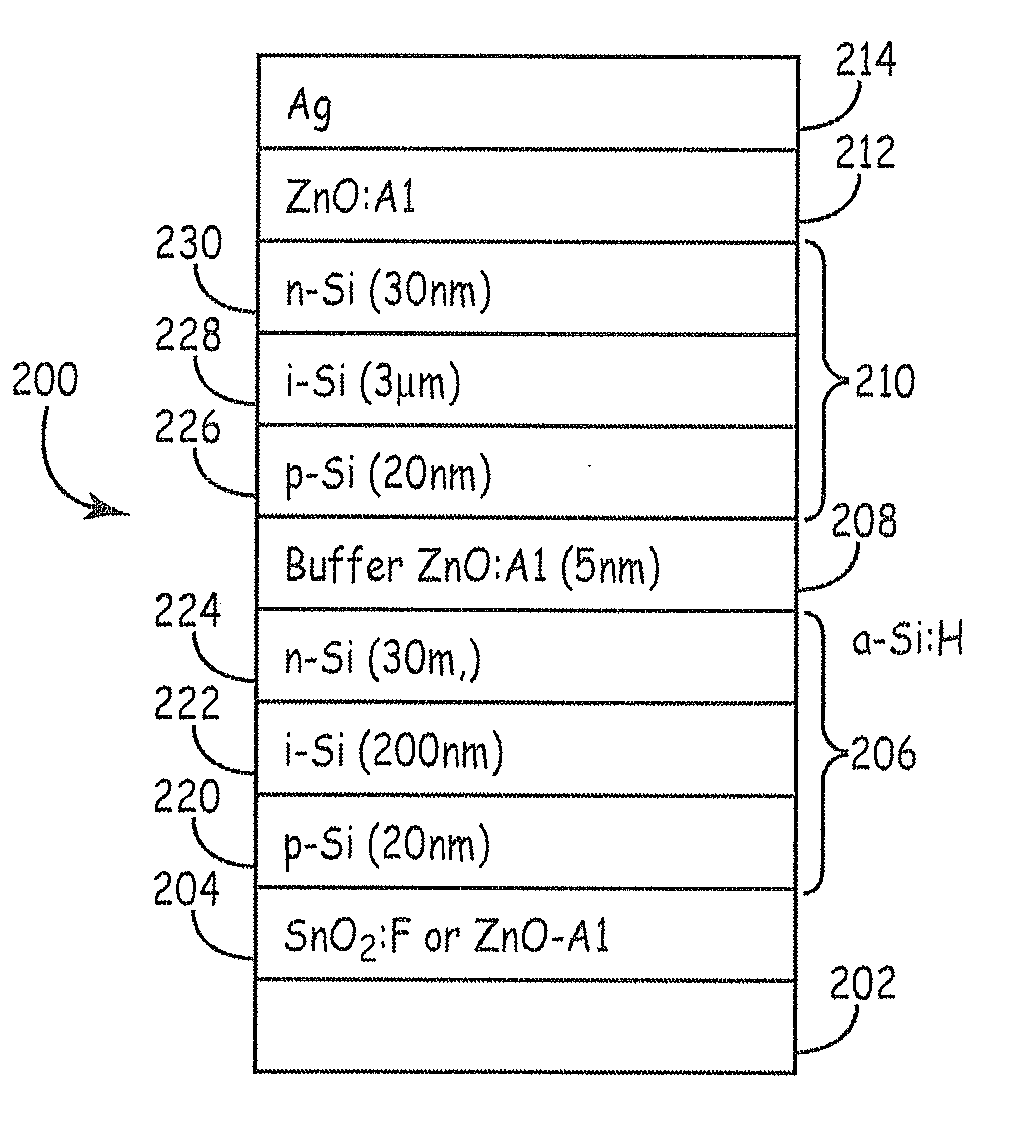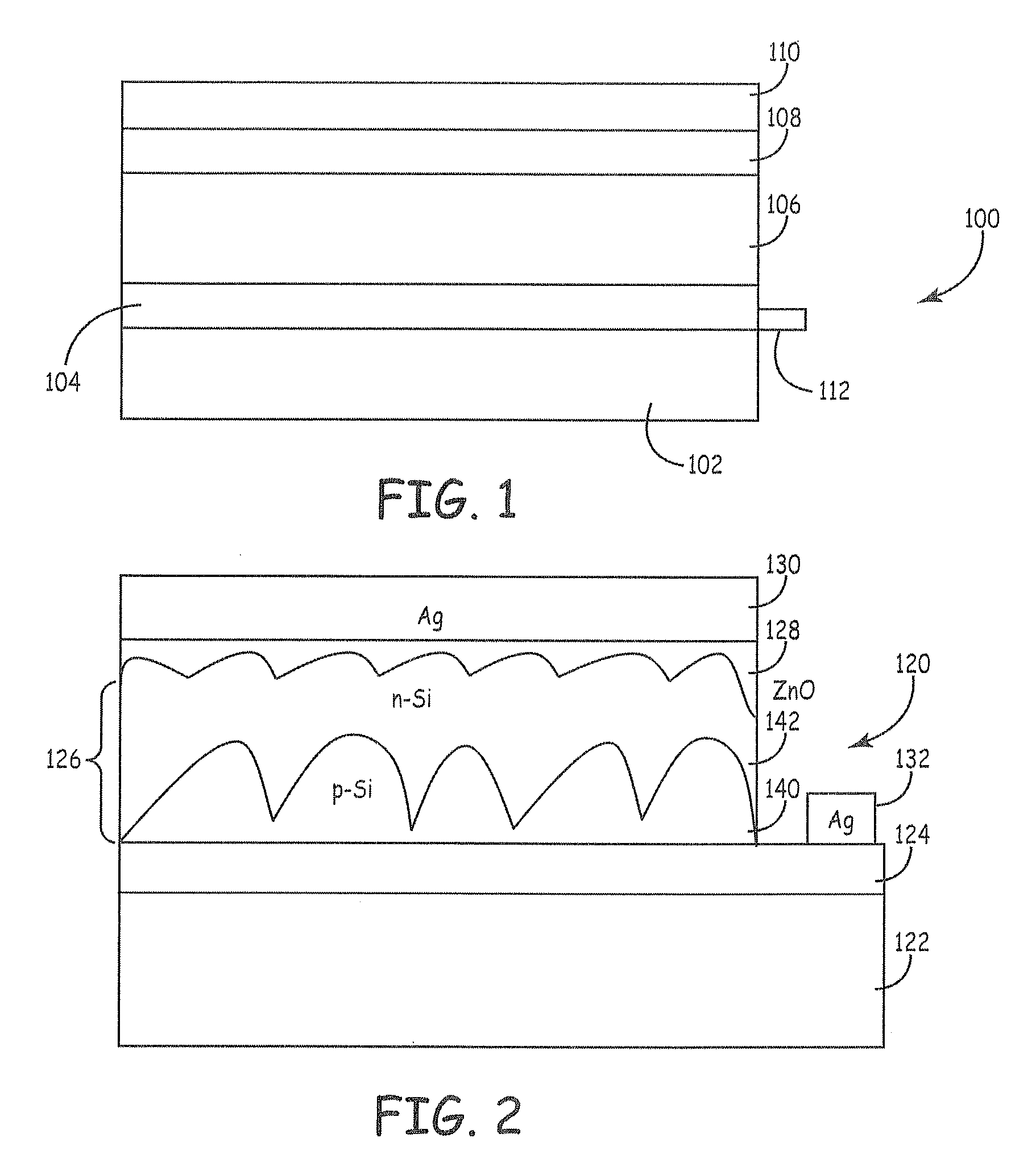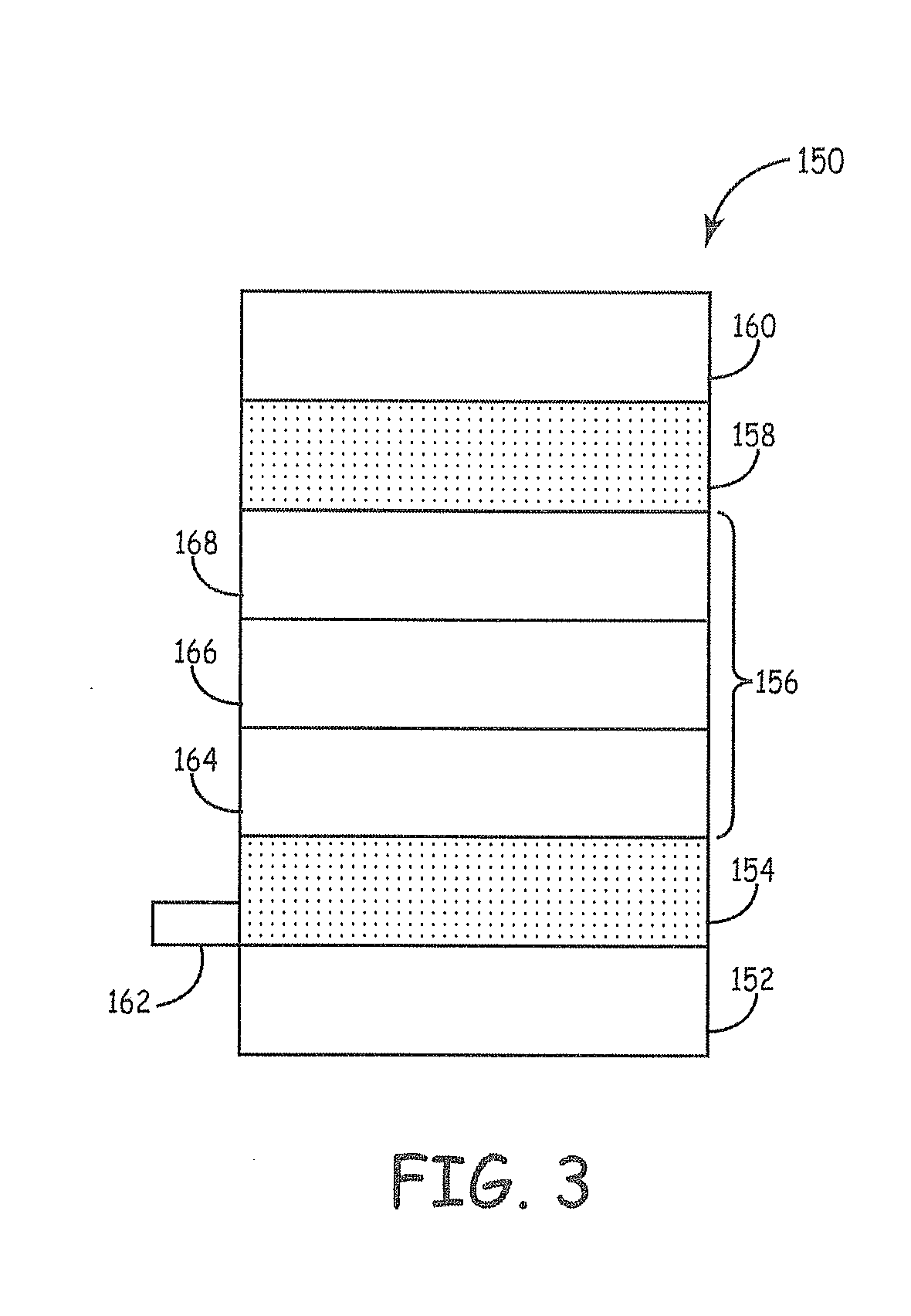Silicon inks for thin film solar cell formation, corresponding methods and solar cell structures
a technology of solar cells and inks, applied in the field of thin film solar cell formation, silicon inks for corresponding methods and solar cell structures, can solve the problems of less desirable non-renewable energy sources
- Summary
- Abstract
- Description
- Claims
- Application Information
AI Technical Summary
Problems solved by technology
Method used
Image
Examples
example 1
Dispersions of Si Nanoparticles
[0152]This example demonstrates the ability to form well dispersed silicon nanoparticles at high concentrations without surface modification of the particles.
[0153]Dispersions have been formed with silicon nanoparticles having different average primary particle sizes. The crystalline silicon particles were formed with high levels of doping as described in Example 2 of copending U.S. provisional patent application Ser. No. 61 / 359,662 to Chiruvolu et al., entitled “Silicon / Germanium Nanoparticle Inks and Associated Methods,” incorporated herein by reference. Concentrated solutions were formed that are suitable for ink applications, and the solvent is also selected for the particular printing application. For secondary particle size measurements, the solutions were diluted so that reasonable measurements could be made since concentrated solutions scatter too much light to allow secondary particle size measurements.
[0154]The particles were mixed with the s...
example 2
Viscosity Measurements on Inks
[0157]This example demonstrates concentrated suspensions of doped silicon nanoparticles in a solvent suitable for screen printing.
[0158]For screen printing, the dispersions are desired to have a greater viscosity and a greater concentration. Various solvent mixtures were tested with respect to viscosity. Dispersions of silicon nanoparticles were formed in solvent mixtures of NPM and PG at various particle concentrations. The undoped silicon nanoparticles had an average primary particle diameter of about 30 nm. Ultrasound was used to facilitate the dispersion. The rheology of the resulting dispersions was studied. Some of the dispersions solidified so that fluid measurements could not be performed. The results are presented in Table 1.
TABLE 1SolventViscosityYSSampleIDSi wt %(cP)(D / cm2)Rheology1117.016.880 N2215.412.994.3NN3315.331.706.3NN4415.5—∞—5514.4—∞—6613.2—∞—7114.1 5.833.4NN8216.110.030.0N9314.610.580.0N10414.122.893.3NN11514.8—∞—12613.1—∞—13111.7...
example 3
Formation and Structural Characterization of Polycrystalline Thin-Films From Silicon Inks
[0163]This example demonstrates the formation of polycrystalline thin-films from silicon inks and the structural characterization of such films.
[0164]A polycrystalline thin-film was formed by first depositing a Si ink onto a substrate and subsequently sintering the coated substrate. The Si ink was formed essentially as described in Example 1 and comprised undoped Si nanoparticles with an average primary particle diameter from 25-35 nm dispersed in an alcohol based solvent. Spin coating was then used to deposit the Si ink in a coating from about 150-250 nm average thickness onto a silica glass wafer. The coated wafer was subsequently soft-baked in an oven at roughly 85° C. to dry the ink prior to laser sintering. Laser sintering was performed with a pulsed excimer laser to sinter the silicon nanoparticles into a polycrystalline thin film.
[0165]The polycrystalline thin-film comprised micron-sized,...
PUM
| Property | Measurement | Unit |
|---|---|---|
| particle size | aaaaa | aaaaa |
| average primary particle diameter | aaaaa | aaaaa |
| thickness | aaaaa | aaaaa |
Abstract
Description
Claims
Application Information
 Login to View More
Login to View More - R&D
- Intellectual Property
- Life Sciences
- Materials
- Tech Scout
- Unparalleled Data Quality
- Higher Quality Content
- 60% Fewer Hallucinations
Browse by: Latest US Patents, China's latest patents, Technical Efficacy Thesaurus, Application Domain, Technology Topic, Popular Technical Reports.
© 2025 PatSnap. All rights reserved.Legal|Privacy policy|Modern Slavery Act Transparency Statement|Sitemap|About US| Contact US: help@patsnap.com



